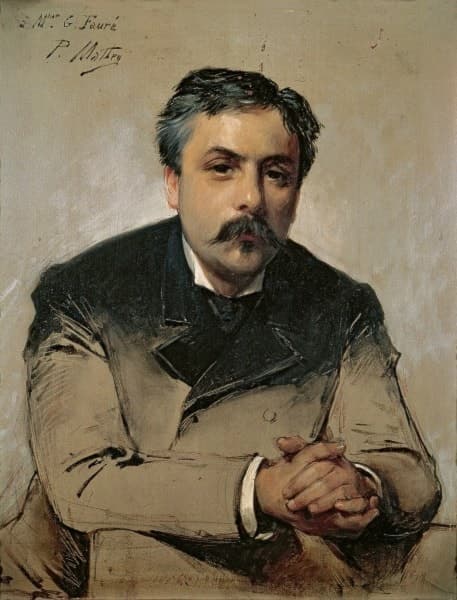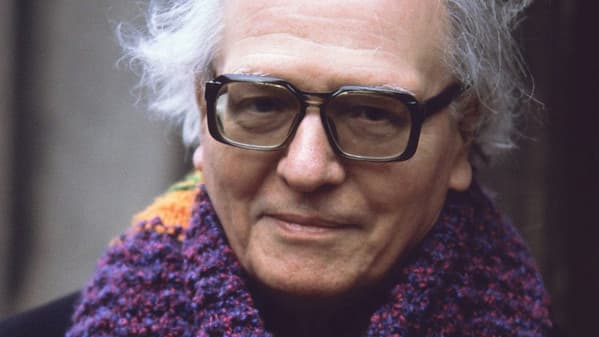César Franck was born in the city of Liège on 10 December 1822, then part of the United Kingdom of the Netherlands. His father, Nicholas-Joseph was a minor clerk, unemployed at the time, but he had great plans for his prodigious musical child.
César was a child genius who loved drawing and playing the piano. His father spotted these talents early and decided to market his young son as a piano prodigy. We come across irresponsible and ambitious parents in the arts all the time, but Nicholas-Joseph was especially aggressive.
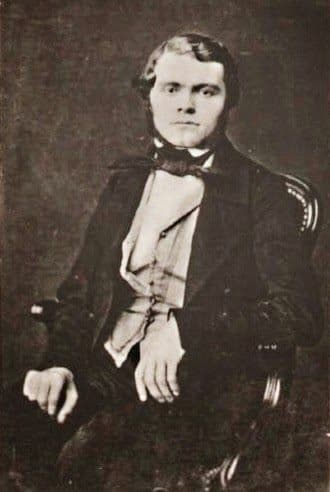
The young César Franck
He took his son from one concert tour to the next and made him enrol at the Conservatoire, only to withdraw him from his studies for lengthy concert tours. Much later in life, César confided in his diary, “my father had grand ideas of money flowing like a river towards us, but unfortunately, it was not so.”
The press took strong exception to the highly aggressive promotional efforts of his father, and only at the age of 24 did César Franck walk out of his parent’s house, making a clear break. But life wasn’t easy as his compositions received only mixed reactions and were not embraced by the public. On the anniversary of his birth on 10 December, we decided to pay tribute to this marvellous composer who played an important role in French music.
Violin Sonata in A major, FWV 8
Let’s get started with Franck’s most famous work, the Violin Sonata in A major. Written in 1886, it is like a musical rollercoaster, full of twists and turns. It is a vibrant and passionate piece that is already a favourite for violinists and audiences. Actually, it’s considered a cornerstone of the violin repertoire and is cherished for its rich thematic material and emotional depth.
One can easily hear Franck’s famous “cyclic structure,” which just means that themes reappear in different movements. This creates a wonderful sense of unity throughout the piece. The opening theme sweeps you into a world of deep emotions, but just when you think it’s getting serious, the music lightens up and dances through playful, joyful passages.
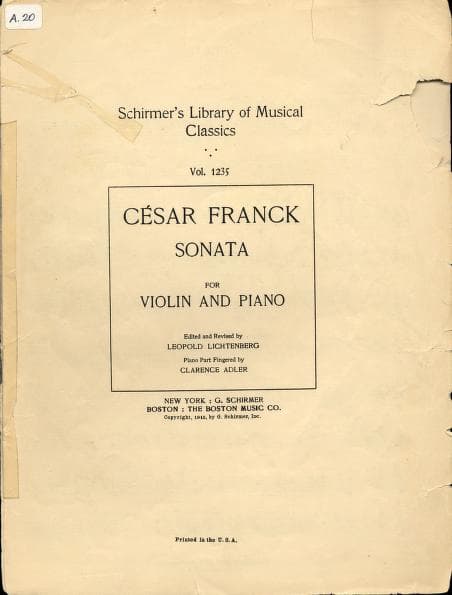
César Franck’s Violin Sonata
The way the violin and piano work together is like a conversation, with each instrument taking turns to lead, complement, and surprise the other. With its lush harmonies and soaring melodies, the sonata has this magical ability to move you, making you feel like you’re on an exciting adventure through sound. This piece is a true gem of the late Romantic period, brimming with passion, warmth, and joy.
Symphony in D minor
Initially, nobody much liked Franck’s D-minor symphony. It was first performed in 1889 with critics unsure about its place in the symphonic tradition. Some found the work bold and thrilling, while others were critical of the harmonic language and the overall structure. It was just too unconventional for its time. Times have changed, however, and today, it is considered one of Franck’s greatest masterpieces, full of emotional power and depth.
The music is like a thrilling, whirlwind musical journey. It’s packed with rich and sweeping themes and plenty of dramatic contrasts. The more I listen to it, the more it feels almost cinematic. There is bold and fiery energy from the very beginning, and just listen to these almost heroic declarations in the interaction between strings and brass. But it’s not all drama, as the second movement offers lush and lyrical melodies in a quiet conversation between the string and woodwinds.
The third movement is a bit of a surprise, as it is almost mischievous at times. It seems full of life and certainly puts a smile on your face. In the finale, Franck pulls out all the stops. He takes all the themes and musical ideas that have been bubbling throughout the piece and brings them together in a thrilling and triumphant conclusion. It is a masterpiece containing intense drama, moments of reflection, and pure moments of joy.
Trois Pièces for Organ
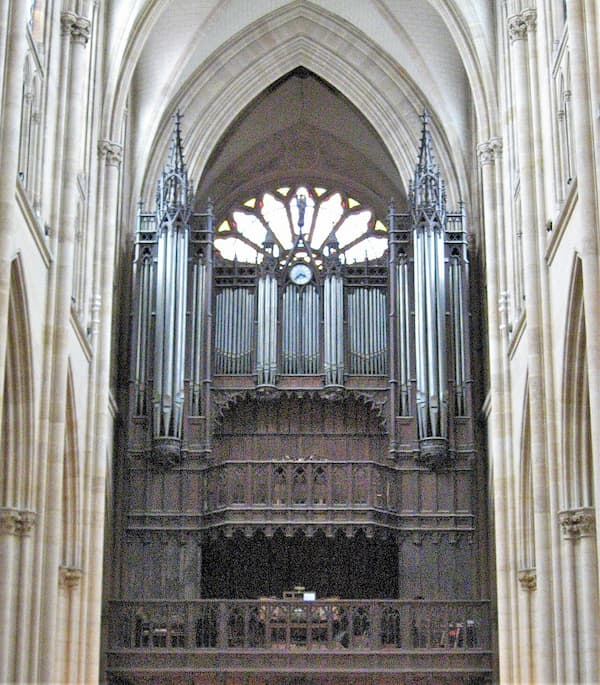
Organ of Sainte-Clotilde, Paris
César Franck: Trois Pièces for Organ (Miklós Teleki, organ)
Franck had always aspired to become an organist, and when he was appointed at the church of Sainte-Clotilde, his dream became a reality. As he later explained, “if you only knew how I love this instrument. It is so supple beneath my fingers and so obedient to all my thoughts.” His improvisations became legendary, and his organ compositions stand at the apex of the Romantic organ repertoire.
Franck’s Three Pieces for Organ are like musical gems, each with its own distinct character, but all combining the composer’s genius for combining passion, drama, and tenderness. Composed in 1878, these pieces are full of vivid contrasts and stunning harmonic colours, almost like sweeping landscapes painted with sound.
The “Fantaisie” transports us into a grand cathedral with organ pipes resonating through the space. Expansive chords and soaring themes offer a diverse musical flow, with moments of turbulent energy followed by calm reflections. The powerful sound of the organ takes centre stage in the “Pièce Héroïque.” It is majestic and commanding, full of energy, and almost like a call to arms. But even within this intensity, there are tender moments that add layers of emotional depth. The “Cantabile” returns to a more intimate and serene space. It is the heart of the set, a gentle and lyrical work that contrasts with the fiery drama of the previous movements.
Prelude, Fugue, and Variation
As I wrote in the introduction, Franck was an exceptional pianist. For a time, he seemed to be in competition with Franz Liszt. They personally met on a couple of occasions, and Liszt later wrote to a friend. “He will find the road steeper and rockier than others may, for, as I have told you, he made the fundamental error of being christened César-Auguste, and, in addition, I fancy he is lacking in that convenient social sense that opens all doors before him.”
Clearly, Franck was never comfortable under the glaring light of the virtuoso stage, and to prove that point, he composed the “Prelude, Fugue, and Variation” in 1884. Franck was at the height of his maturity as a composer, and this beautiful and intricate work, initially for organ but later arranged for solo piano, reflects Franck’s rich harmonic language and his deep understanding of counterpoint. It’s basically a homage to Bach, and each section offers a different way of approaching the initial theme.
Franck introduces us to a beautifully simple theme that is immediately inviting and conversational. The real fun begins in the “Fugue” when Franck stretches out the theme, and each new entry of the theme adds its own twist. He also incorporates surprising harmonic turns or playful rhythms, with each voice giving a new level of depth to the original theme. In the “Variation”, he dresses the theme in different costumes, with each variation showing a new side of its character. He certainly is having fun exploring all the possibilities of what the theme has to offer.
The Cursed Hunter
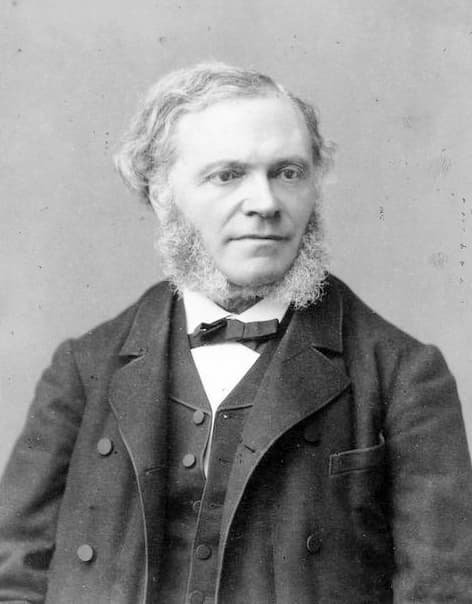
Pierre Petit: César Franck
César Franck: Le chasseur maudit (The Cursed Hunter) (Lyon National Orchestra; Nikolaj Znaider, cond.)
I just love a good story translated into music. And that is exactly what Franck did in 1883 when he composed “The Cursed Hunter.” It tells the story of the count of the Rhineland who commits the sacrilege of going hunting on a Sunday. He happily ignores the sound of the bells and the singing of the faithful on their way to Mass. But very soon, his horse stopped, and his hunting horn fell silent. A terrifying voice utter a horrendous curse; the huntsman is condemned to ride forever, pursued by demons.
Franck’s symphonic poem, and he composed five such colourful stories in music, is a wild ride through a dark and eerie forest full of dramatic twists and unexpected turns. He brings the legend of the hunter to life with a mix of spooky moments and frantic energy. It all starts with a somewhat mysterious theme, setting the mood for the cursed ride.
The music continues to build, and the orchestra bursts into action with various bold and sweeping melodies that hint at danger. As you might expect from this story, the rhythm is relentless as it mimics the endless chase. Darker and more ominous tones suggest the curse, but finally, it seems that the chase might be over. It all ends in a dramatic and unresolved way, but it is clear that the hunter won’t escape. What a thrilling and atmospheric work, full of suspense and excitement; that’s why I love symphonic poems.
Symphonic Variations
Franck composed his Symphonic Variations for piano and orchestra in 1885. One of Franck’s most approachable compositions, it showcases the composer’s love for harmonic complexity and his mastery of orchestration. However, it also contains moments of deep emotional richness.
The principal theme is introduced by the piano. It is an elegant and simple theme, almost a dreamy melody that is then echoed and explored by the full orchestra. What is really fun about this piece is how Frank takes that theme and spins it into something new and exciting with every variation. He offered different moods, tempos, and textures, alternating between light and playful utterances and bold and dramatic statements.
A real highlight of this work is the interaction between the piano and orchestra, with the theme constantly evolving. It certainly reveals the composer’s deep understanding of both thematic development and orchestral colour. To be sure, Franck uses his gift for blending beauty and drama in a mixture of elegance and compositional genius. It’s a wonderful example of blending tradition with innovation, and it is one of the composer’s most accessible works.
“Nocturne”
The mélodies by César Franck were only known to a small circle of connoisseurs during his lifetime. Today, however, they are recognised for their expressive power and the composer’s ability to merge lyrical melodies with rich and complex harmonies. A scholar wrote, “His contributions to the French mélodie genre helped bridge the gap between the more traditional Romantic style and the more modern, impressionistic approaches that were developing around the turn of the 20th century.”
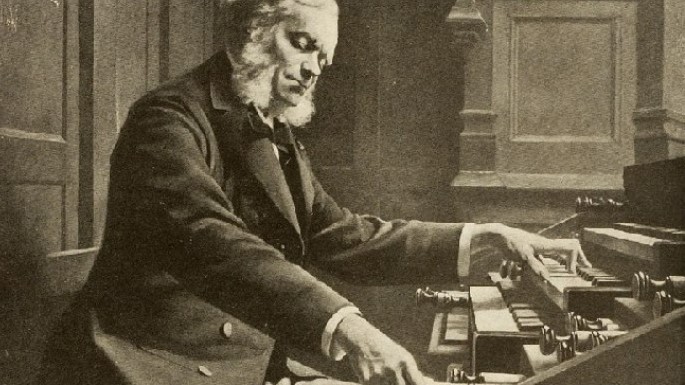
César Franck at the organ
One of my favourite is “Nocturne,” composed in 1882. It is the setting of a poem by Paul Verlaine and captures the serene and contemplative atmosphere of the night. The gently flowing melody is both lyrical and expressive, with the piano providing a shimmering backdrop. And you can hear how Franck’s chromatic harmonic and shifts of tonality enhance the sense of longing conveyed in Verlaine’s text. What a wonderful mélodie, both tender and sophisticated, as it fuses emotional depth with harmonic complexity.
Panis Angelicus (Angelic Bread)
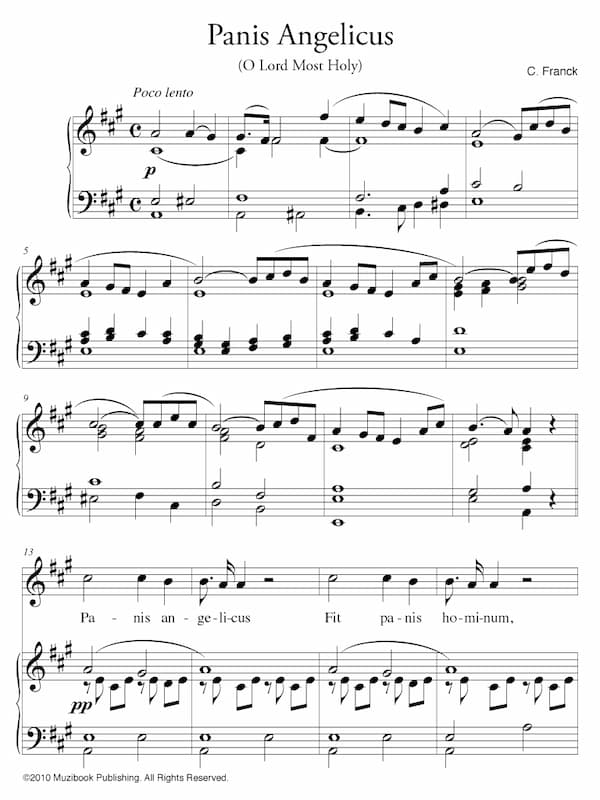
César Franck’s Panis Angelicus
Stanley Sadie described César Franck as “a man of utmost humility, simplicity, reverence and industry.” We have seen that his reputation rests largely with a few large-scale orchestral and instrumental works of his later years. However, most of his compositions are associated with his employment as an organist, a position he held for over 30 years. Naturally, he composed a vast number of organ compositions, but we also find numerous sacred vocal works.
Among his most celebrated compositions is a musical setting of “Panis Angelius,” a serene piece that feels like a musical prayer. The title refers to the Eucharist, and it was composed in 1872 as part of a larger work. The music perfectly captures a sense of reverence and tranquillity, and the simple melody is surrounded by lush harmonies that give it an almost heavenly quality.
Franck’s setting has been described as invoking a sense of “serene anxiety.” This musical paradox also governs the vocal line, as the soloist performs a melody of angelic lyricism enriched by surprising harmonic inflection and the occasional strain of chromatic intonation.
I hope you enjoyed our little excursion into the musical world of César Franck, a world full of emotional intensity and spirituality. Franck was a wonderful composer whose reputation, especially outside of France, took a little longer to develop. But his influence remains powerful, specifically in organ music and in late-Romantic orchestral and chamber works. Happy Birthday Mr. Franck.
For more of the best in classical music, sign up for our E-Newsletter

